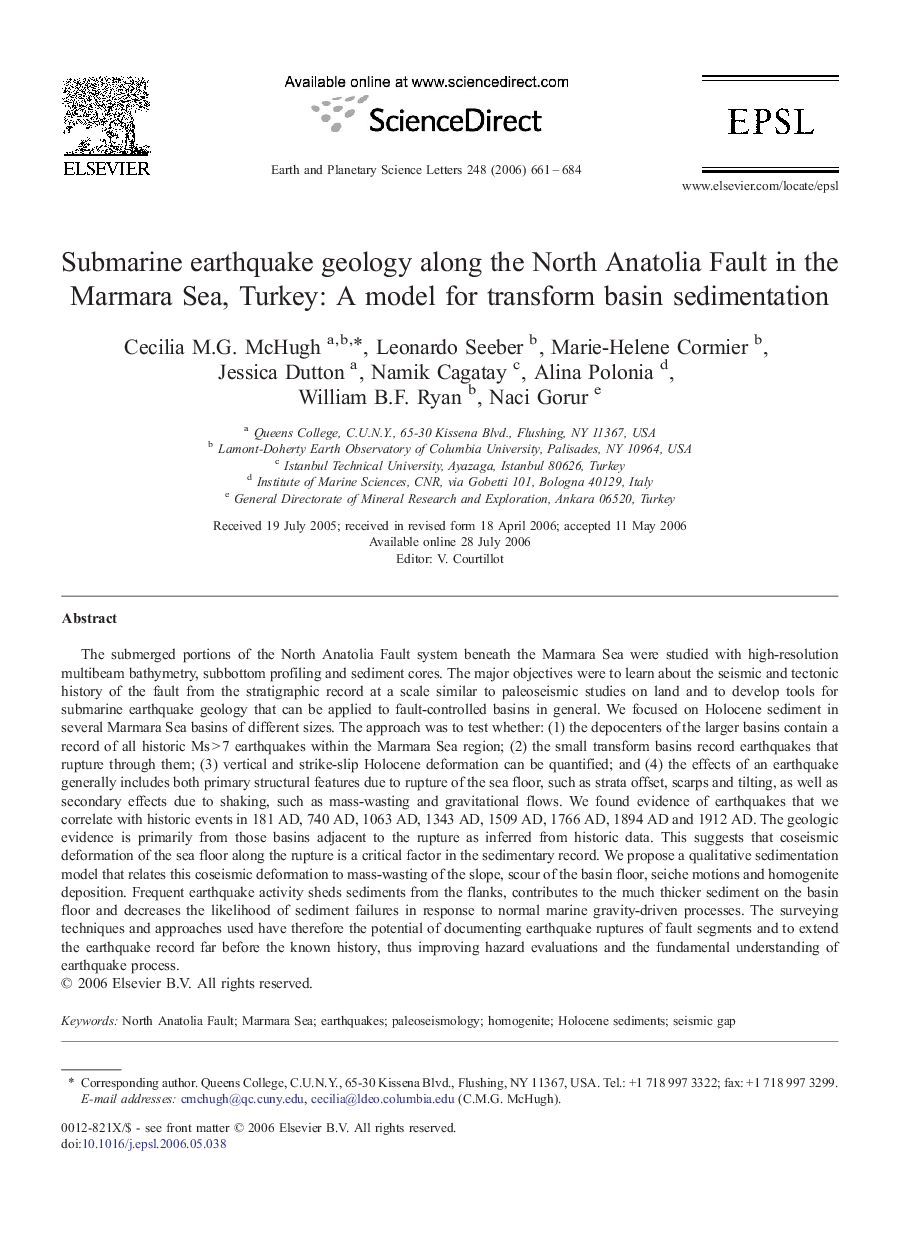| کد مقاله | کد نشریه | سال انتشار | مقاله انگلیسی | نسخه تمام متن |
|---|---|---|---|---|
| 4680722 | 1634938 | 2006 | 24 صفحه PDF | دانلود رایگان |

The submerged portions of the North Anatolia Fault system beneath the Marmara Sea were studied with high-resolution multibeam bathymetry, subbottom profiling and sediment cores. The major objectives were to learn about the seismic and tectonic history of the fault from the stratigraphic record at a scale similar to paleoseismic studies on land and to develop tools for submarine earthquake geology that can be applied to fault-controlled basins in general. We focused on Holocene sediment in several Marmara Sea basins of different sizes. The approach was to test whether: (1) the depocenters of the larger basins contain a record of all historic Ms > 7 earthquakes within the Marmara Sea region; (2) the small transform basins record earthquakes that rupture through them; (3) vertical and strike-slip Holocene deformation can be quantified; and (4) the effects of an earthquake generally includes both primary structural features due to rupture of the sea floor, such as strata offset, scarps and tilting, as well as secondary effects due to shaking, such as mass-wasting and gravitational flows. We found evidence of earthquakes that we correlate with historic events in 181 AD, 740 AD, 1063 AD, 1343 AD, 1509 AD, 1766 AD, 1894 AD and 1912 AD. The geologic evidence is primarily from those basins adjacent to the rupture as inferred from historic data. This suggests that coseismic deformation of the sea floor along the rupture is a critical factor in the sedimentary record. We propose a qualitative sedimentation model that relates this coseismic deformation to mass-wasting of the slope, scour of the basin floor, seiche motions and homogenite deposition. Frequent earthquake activity sheds sediments from the flanks, contributes to the much thicker sediment on the basin floor and decreases the likelihood of sediment failures in response to normal marine gravity-driven processes. The surveying techniques and approaches used have therefore the potential of documenting earthquake ruptures of fault segments and to extend the earthquake record far before the known history, thus improving hazard evaluations and the fundamental understanding of earthquake process.
Journal: Earth and Planetary Science Letters - Volume 248, Issues 3–4, 30 August 2006, Pages 661–684